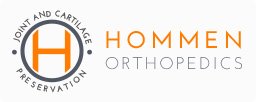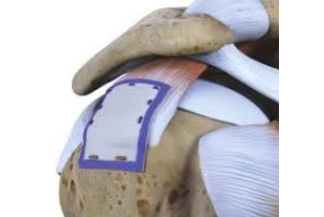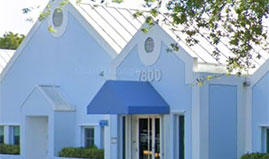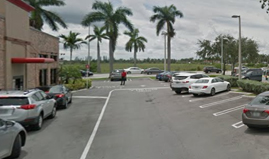Author: Dr. J. Pieter Hommen
A tear of the rotator cuff tendon from the bone can result in significant pain and disability. Some patients can be managed with conservative treatments, whereas others require repair of the tendon back to bone to restore function and pain relief. Nearly 400,000 rotator cuff repairs are performed annually in the United States. Over the past 15 years, there have been tremendous advancements in rotator cuff repair surgery. However, we have also learned that rotator cuff tears take longer to heal to bone than we initially thought. A successfully repaired tendon requires 1) strong fixation of the tendon to bone and 2) appropriate biological healing.
Failures Can Happen
In 2004, a scientific review of rotator cuff repairs by Dr. Yamaguchi in 2004 demonstrated that up to 90% of repairs showed some sign of recurrence. Since then, repair techniques have improved, however there is still an incidence of recurrent tears. Recurrences are most often seen within the first 4 months and are unlikely to happen after 6 months, despite surgical advancements in implant and repair constructs. The repaired tendon sees a significant amount of force during the first 4 months during physical therapy session and with the patient’s activities of daily living. This clearly illustrates the fact that there is a race between the time it takes for the tendon to fully grow onto the bone and the repeated stress on the suture and anchor construct holding the tendon to bone. Therefore, in order to improve the ultimate success rate of repairs, we need to develop stronger mechanical repairs and increase the speed of the actual biological healing of the tendon to bone.
Improving the Mechanics of Repairs
Sutures, Anchors and Biological Graft Patches
The surgeon is able to improve the success of repairs by controlling for certain variables such as the anchor type, suture material, knot type and the stitch configuration. Furthermore, selecting the appropriate candidate for a repair is also important. We know that there are higher failure rates in degenerative rotator cuff tears seen in patients with advanced age, long standing tears, and very massive tears. Biological augmentation through the use of patches or grafts can also increase the strength of repairs (see my previous Blog entitled “Allograft Repair of Massive and “Irreparable’ Rotator Cuff Tears”.) The surgeon can augment the repair by sewing in a strong acellular dermal matrix graft or “allograft patch” to reinforce the repair. This has been shown in studies to significantly increase the strength of the repair and reduce the failure of repairs.
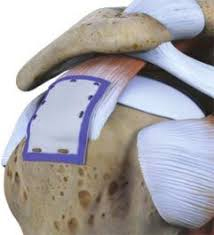
Improving the Biology of Repairs?
The currently available biologics are used to enhance tendon repairs at the cellular level by attracting and activating cells to release growth factors and reduce the amount of break-down products that are harmful to the repair.
Platelet Rich Plasma (PRP) is a super concentrate of the patient’s own blood by harvesting the platelet cells found in the plasma. When we suffer an injury such as a skin laceration, these platelets arrive at the scene and start the healing process. Stored inside small granules within the platelet are growth factors that promote the growth of new tendon cells and blood vessels as well as the construction of a foundation on which the tendon can heal. They also act similar to a traffic signal by directing the growth and proliferation of different types of cells that arrive and settle in to repair the tear. Platelets can be easily harvested by drawing a small amount of blood from the vein. The blood is then placed into a centrifuge for 15-20 minutes to separate the red blood cells from the yellow colored plasma. The plasma portion then has a high concentration of platelets which can be used to direct the healing process at the rotator cuff repair site.

Stem cells are precursor cells that have the unique ability to turn into different specialized cells in the body through a process called differentiation. Numerous studies have shown that stem cells can significantly increase the success of tendon healing. Adult, or somatic, stem cells also have the ability to turn into more than one cell type, however this differentiation is restricted to a limited number of cell types. Adult stem cells are found in tissues such as the brain, bone marrow, blood, fat, blood vessels, skeletal muscles, skin and liver. Amniotic stems cells are derived from the fluid that surrounds the fetus and have a larger potential ability to turn into skin, fibrinous scar tissue, blood vessels, nerve, bone, and cartilage. One additional added benefit of amniotic fluid is that is a strong combatant against matrix metalloproteinases, a substance that starts the breakdown and destruction process of tendons and can limit tendon healing. Amniotic fluid can therefore be used to increase the healing rate of tendon repairs.
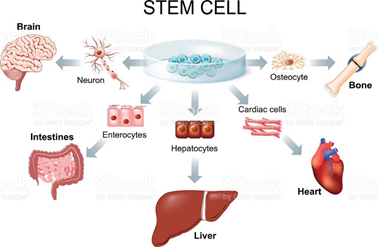
Increasing the Success of Rotator Cuff Repairs?
The successful healing of a repaired rotator cuff may rely on your surgeon having extensive experience utilizing the best mechanical and biological methods available.
To see if you are a candidate for biologics in your rotator cuff tear surgery, Request an Appointment Online or call 305-520-5625.
About The Author:
J. Pieter Hommen, MD
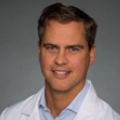 Dr. Hommen is board certified and fellowship trained in sports medicine and advanced arthroscopy of the shoulder, elbow, hip, knee, and ankle. He specializes in injuries and arthritis of the shoulder and knee and non-arthritic injuries of the hip. Through social media, Dr. Hommen’s goal is to provide accurate reviews of peer-reviewed and evidence-based medical data to improve your understanding of what can often be complex medical topics. This allows you to better share in the medical decision-making process as a more educated patient.
Dr. Hommen is board certified and fellowship trained in sports medicine and advanced arthroscopy of the shoulder, elbow, hip, knee, and ankle. He specializes in injuries and arthritis of the shoulder and knee and non-arthritic injuries of the hip. Through social media, Dr. Hommen’s goal is to provide accurate reviews of peer-reviewed and evidence-based medical data to improve your understanding of what can often be complex medical topics. This allows you to better share in the medical decision-making process as a more educated patient.

